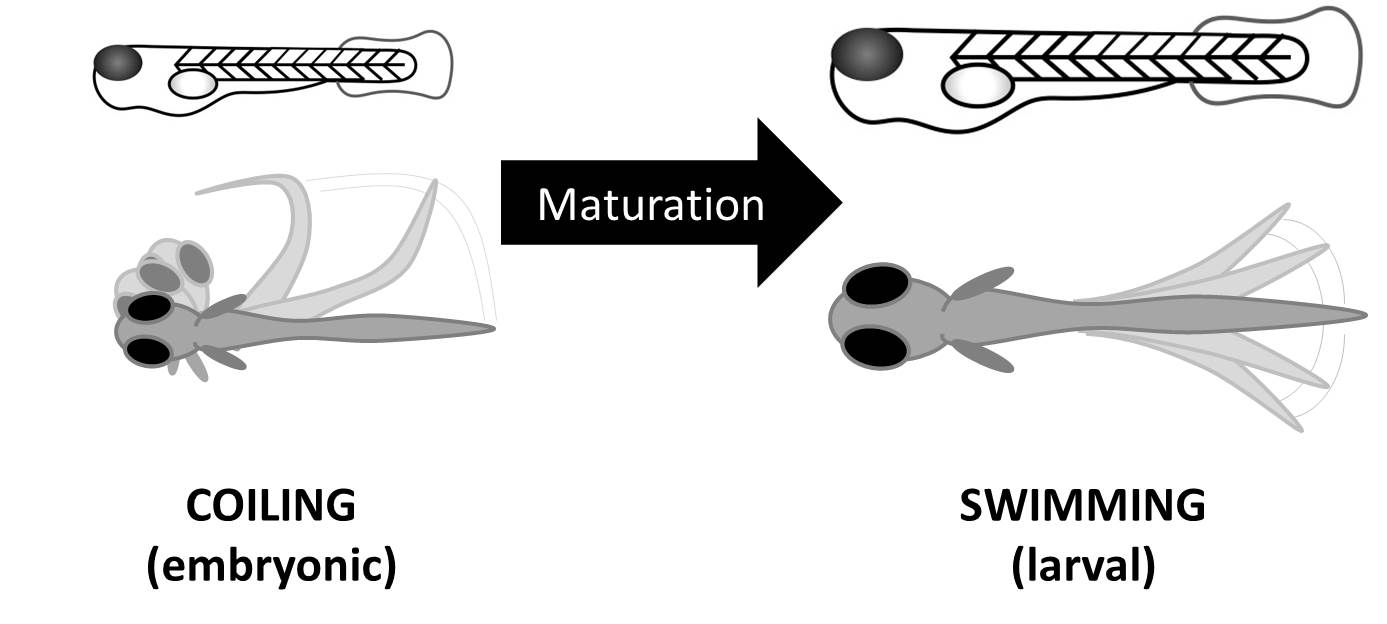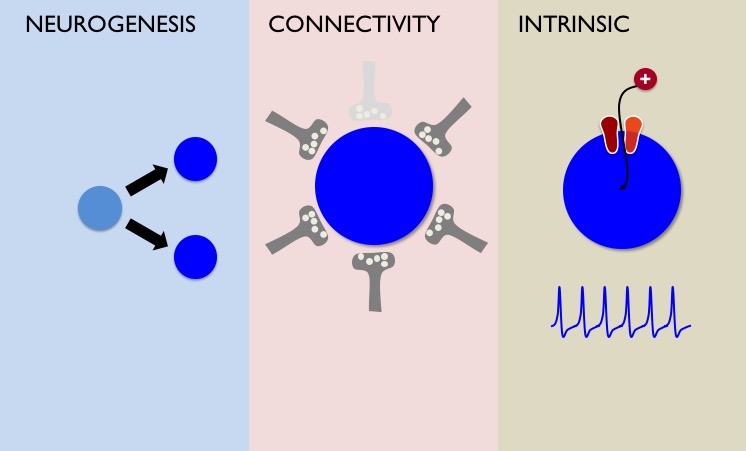CIRCUIT FORMATION AND MOTOR MATURATION

During development, new movements are learned and old movements are refined. For example, developing zebrafish transition from coiling movements in embryos to more refined swimming movements.
This maturation of movements is due to several mechanisms including neurogenesis (and apoptosis) whereby new neurons are born and form new circuits or integrate into existing circuits. Single neurons may also modify their activity through changes in intrinsic properties (e.g. morphology, ligand and voltage-gated channels).

We have recently published a paper describing how the role of inhibition in the generation of swimming rhythm may change during development in larval zebrafish. A computational study from our lab also describes how the composition and the operation of spinal circuits for locomotion in zebrafish may be modified as fish start exhibiting different movements.
dI3 interneurons
One circuit of interest in the mouse is centered on a population of spinal neurons named dI3 interneurons (dI3 INs). DI3 INs integrate sensory information related to touch (mechanoreception) and state of muscle activity (proprioception) and in turn, they shape the activity of motor circuits within the spinal cord.
DI3 INs form circuits that in newborns, control the palmar grasp reflex, a reflex where the paw closes when the skin of the palm is stroked by an object. We have shown that these circuits become crucial for properly controlling hand grasp. This suggests that the palmar grasp reflex is the precursor to controlling hand grasp. Hand grasp would develop as the brain learns to use the spinal circuits formed by dI3 INs. Our lab is studying the changes in connectivity of dI3 INs that allow their role to transition from mediating a reflex to willful control of hand grasping.
SPINAL CORD PATTERNING
The development of embryos requires proper body patterning along various axes (e.g. head to toe, front to back). Improper development along these axes has important consequences (imagine the face being placed at the back of the head). The nervous system has a precise structure and even simpler areas such as the cylinder-like spinal cord require proper patterning on the rostrocaudal (head-to-toe) and the dorsoventral (back-to-front) axes. The dorsal half of the spinal cord is dedicated to processing of sensory information whereas the ventral half is associated with the control of movements. Incomplete development of the dorsal spinal cord has been shown to lead to deficits with sensory processing. Disrupted development of the ventral half has resulted in deficits in movements. Therefore, understanding the patterning of the spinal cord is important for understanding how the spinal cord functions properly.
In collaboration with Dr. Marie-Andree Akimenko (University of Ottawa), our lab is studying the transcriptional programs that establish proper patterning of the spinal cord of zebrafish. Using a number of transgenic strains in combination with molecular techniques such as immunohistochemistry and in-situ hybridization, our lab is determining genes involved in spinal cord patterning and their transcriptional regulation.